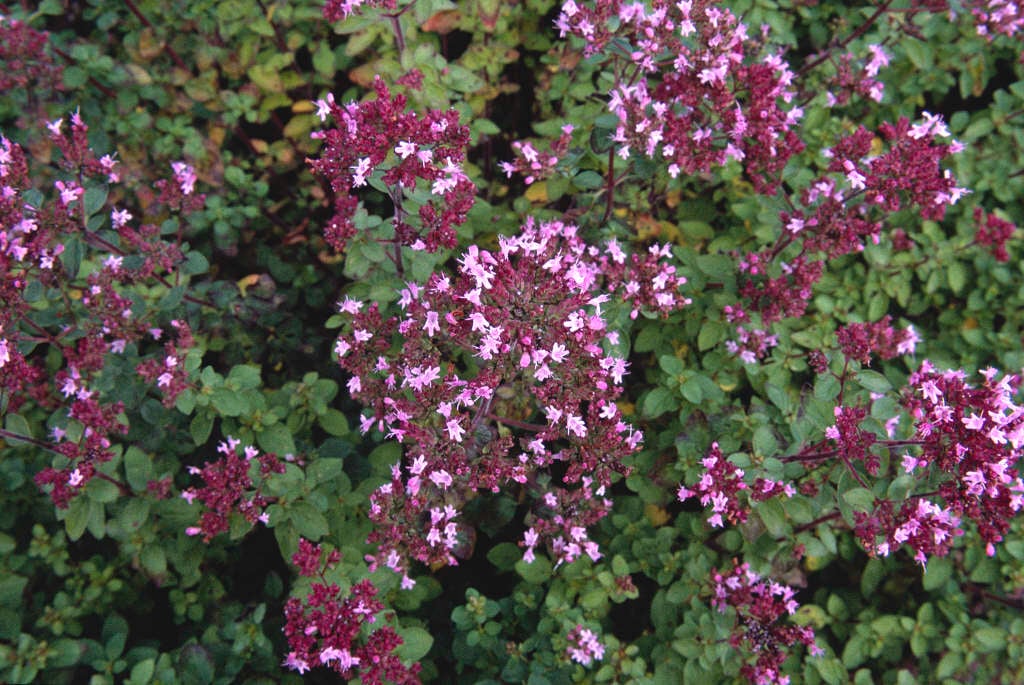Origanum vulgare 'Compactum'

compact oregano
A compact, bushy, woody-based perennial forming a low mound to 15cm tall, with small, strongly aromatic, ovate leaves and loose sprays of tiny purple-pink flowers opening from summer to early autumn
Size
Ultimate height
0.1–0.5 metresTime to ultimate height
2–5 yearsUltimate spread
0.1–0.5 metresGrowing conditions
Moisture
Well–drainedpH
Acid, Alkaline, NeutralColour & scent
| Stem | Flower | Foliage | Fruit | |
| Spring | Green | |||
|---|---|---|---|---|
| Summer | Purple Pink | Green | ||
| Autumn | Purple Pink | Green | ||
| Winter |
Position
- Full sun
- Partial shade
Aspect
East–facing or South–facing or North–facing or West–facing
Exposure
Exposed or Sheltered Hardiness
H5Botanical details
- Family
- Lamiaceae
- Native to GB / Ireland
- No
- Foliage
- Deciduous
- Habit
- Matforming
- Genus
Origanum may be herbaceous perennials or deciduous or evergreen sub-shrubs, with aromatic foliage and spikes of small tubular flowers usually with conspicuous bracts
- Name status
Accepted
How to grow
Cultivation
Grow in a any well-drained (preferably alkaline) soil, in full sun or partial shade. See oregano cultivation See https://www.rhs.org.uk/plants/trials-awards for further information about RHS plant trials and awards
Propagation
Propagate by seed or by division in the autumn or spring
Suggested planting locations and garden types
- City and courtyard gardens
- Coastal
- Cottage and informal garden
- Patio and container plants
- Gravel garden
- Rock garden
- Wildlife gardens
- Flower borders and beds
- Garden edging
Pruning
Cut back old, flowered stems in early spring
Pests
May be susceptible to leafhoppers
Diseases
Generally disease-free
Get involved
The Royal Horticultural Society is the UK’s leading gardening charity. We aim to enrich everyone’s life through plants, and make the UK a greener and more beautiful place.
